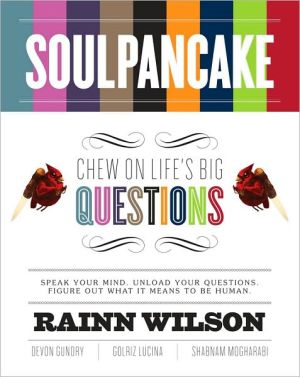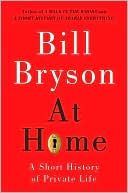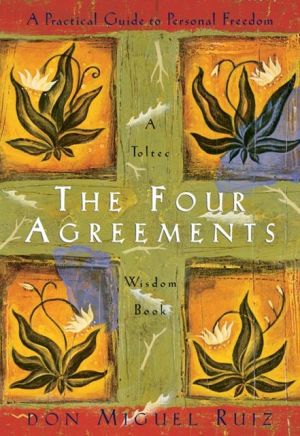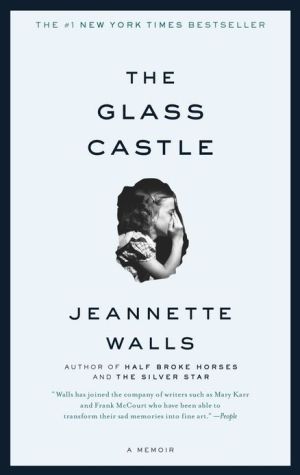Rest in Peace: A Cultural History of Death and the Funeral Home in Twentieth-Century America
Though it has often been passionately criticized—as fraudulent, exploitative, even pagan—the American funeral home has become nearly as inevitable as death itself, an institution firmly embedded in our culture. But how did the funeral home come to hold such a position? What is its history? And is it guilty of the charges sometimes leveled against it?\ In Rest in Peace, Gary Laderman traces the origins of American funeral rituals, from the evolution of embalming techniques during and after...
Search in google:
Though it has often been passionately criticized—as fraudulent, exploitative, even pagan—the American funeral home has become nearly as inevitable as death itself, an institution firmly embedded in our culture. But how did the funeral home come to hold such a position? What is its history? And is it guilty of the charges sometimes leveled against it? In Rest in Peace, Gary Laderman traces the origins of American funeral rituals, from the evolution of embalming techniques during and after the Civil War and the shift from home funerals to funeral homes at the turn of the century, to the increasing subordination of priests, ministers, and other religious figures to the funeral director throughout the twentieth century. In doing so he shows that far from manipulating vulnerable mourners, as Jessica Mitford claimed in her best-selling The American Way of Death (1963), funeral directors are highly respected figures whose services reflect the community's deepest needs and wishes. Indeed, Laderman shows that funeral directors generally give the people what they want when it is time to bury our dead. He reveals, for example, that the open casket, often criticized as barbaric, provides a deeply meaningful moment for friends and family who must say goodbye to their loved one. But he also shows how the dead often come back to life in the popular imagination to disturb the peace of the living. Drawing upon interviews with funeral directors, major historical events like the funerals of John F. Kennedy and Rudolf Valentino, films, television, newspaper reports, proposals for funeral reform, and other primary sources, Rest in Peace cuts through the rhetoric to show us the reality—and the real cultural value—of the American funeral. The New Yorker In the twelfth century, the bazaars of Arabia were known to offer an exotic and allegedly salutary concoction called "mellified man" -- essentially human remains steeped in honey. Mellified man was also known as "human mummy confection," and one recipe for it called specifically for "a young, lusty man" as the main ingredient. This strange footnote in the history of death and decay is recalled by Mary Roach in her surprisingly lively Stiff: The Curious Lives of Human Cadavers. "Cadavers," Roach writes, "are our superheroes: They brave fire without flinching, withstand falls from tall buildings and head-on car crashes into walls." We learn, among other notable macabre facts, that a detached human head is about the size and weight of a roaster chicken, that King Ptolemy I of Egypt first green-lighted autopsies in 300 B.C., that embalming-fluid companies once sponsored best-preserved-body contests, and that the French at the time of the Revolution were obsessed with discovering how long guillotined heads remained aware of their surroundings. Roach reports that the next big thing on the mortuary horizon is something called the "tissue digestor," which replaces the outmoded options of burial or cremation with, essentially, a big tub of lye. In Rest in Peace, the historian Gary Laderman looks into the culture of funeral homes in America, noting that embalming took off after the Lincoln assassination and became a booming business in the twentieth century, nudged along by the popularity of mummy films and a burgeoning class of undertakers leafing through Casket & Sunnyside magazine. As Roach puts it: "Death. It doesn't have to be boring." (Mark Rozzo)
1From house calls to funeral homes : changing relations between the living and the dead12Explaining the American funeral, 1918-1963453Good grief! : Jessica Mitford makes the New York Times bestseller list834Keeping the dead in place : old and new patterns of consumption1195Final frontiers : into the twenty-first century170Epilogue : 9/11212
\ The Los Angeles TimesIn Rest in Peace, Laderman, a professor of religious history at Emory University, records and reflects upon the further evolution of the American funeral and funeral directors: the shift from family parlors to funeral parlors, the influences of pop psyche and pop culture, regulation and consolidation. — Pat Lynch\ \ \ \ \ The New YorkerIn the twelfth century, the bazaars of Arabia were known to offer an exotic and allegedly salutary concoction called "mellified man" -- essentially human remains steeped in honey. Mellified man was also known as "human mummy confection," and one recipe for it called specifically for "a young, lusty man" as the main ingredient. This strange footnote in the history of death and decay is recalled by Mary Roach in her surprisingly lively Stiff: The Curious Lives of Human Cadavers. "Cadavers," Roach writes, "are our superheroes: They brave fire without flinching, withstand falls from tall buildings and head-on car crashes into walls." We learn, among other notable macabre facts, that a detached human head is about the size and weight of a roaster chicken, that King Ptolemy I of Egypt first green-lighted autopsies in 300 B.C., that embalming-fluid companies once sponsored best-preserved-body contests, and that the French at the time of the Revolution were obsessed with discovering how long guillotined heads remained aware of their surroundings.\ \ \ Roach reports that the next big thing on the mortuary horizon is something called the "tissue digestor," which replaces the outmoded options of burial or cremation with, essentially, a big tub of lye. In Rest in Peace, the historian Gary Laderman looks into the culture of funeral homes in America, noting that embalming took off after the Lincoln assassination and became a booming business in the twentieth century, nudged along by the popularity of mummy films and a burgeoning class of undertakers leafing through Casket & Sunnyside magazine. As Roach puts it: "Death. It doesn't have to be boring." (Mark Rozzo)\ \ \ \ Publishers WeeklyIn 1963, Jessica Mitford's The American Way of Death shocked the nation and provoked scandal throughout the funeral industry. Mitford portrayed undertakers as exploitative businessmen eager to turn a profit off of a poor man's grief. Her book climbed the bestseller list and put the growing and profitable funeral industry on the defensive. Forty years later, Laderman comes to the industry's defense with this thoughtful book. His case is cautious and honest. He presents the industry's history from its inception during the Civil War period up to the present. The author explores American attitudes toward death through various lenses, including cultural, religious and psychological history, which demonstrate a pervasive fascination with death and a desire to share an intimate moment with the dead as a part of the grieving process. Cultural examples of this include the wave of public grief at the sudden death of movie icon Rudolph Valentino and Thornton Wilder's Pulitzer-winning play Our Town. In the last chapter, Laderman discusses current and future challenges facing the industry-such as a desire for cremation and "the rise of death-care giants"-and the industry's successful attempt to deal with them. Laderman, a professor of American religious history and culture at Emory University, provides convincing evidence that the industry is a necessary and compassionate force in American life. While critics like Mitford paint a picture of greed, this account offers a more nuanced image: an industry that provides a "meaningful and material order out of the chaos of death." Illus. not seen by PW. (Mar.) Copyright 2003 Cahners Business Information.\ \ \ \ \ Library JournalIn 1963, two events profoundly affected the American funeral business: the publication of Jessica Mitford's expos , The American Way of Death, and the Kennedy assassination. Laderman (Emory Univ.; The Sacred Remains: American Attitudes Toward Death, 1799-1983) uses these and many other topics to explore the world of death specialists, the development of their profession in post-Civil War America, and the profession's role in American culture. A prolog and introduction preview the subject and state philosophy and goals. The topics covered in subsequent chapters include embalming, the repatriation of wartime remains, the rise of corporate facilities, the AIDS epidemic, and cultural representations such as The Night of the Living Dead and Six Feet Under. A brief epilog explores the impact of 9/11. Laderman's respect, even affection, for the profession is clearly evident, but he maintains objectivity throughout. Especially impressive is his treatment of Mitford, whose accusations he challenges politely but thoroughly. Although a bibliography, in addition to the extensive endnotes, would have been helpful, such a scholarly yet accessible survey of a difficult subject should, along with Mitford's book (updated in 2000 as The American Way of Death Revisited), be found in every library.-M.C. Duhig, Lib. Ctr. of Point Park Coll. & Carnegie Lib. of Pittsburgh Copyright 2003 Reed Business Information.\ \ \ \ \ Kirkus ReviewsLaderman continues where he left off in The Sacred Remains (not reviewed), extending that study of "American attitudes toward death" into the 20th century. The author immediately challenges Jessica Mitford’s 1963 indictment of the funeral industry, The American Way of Death, claiming that it overlooks cultural, religious, emotional, and psychological dimensions of disposal of the dead. Funeral directors are well-respected, Laderman (American Religious History and Culture/Emory Univ.) asserts, and their services are highly valued. He selects three cultural phenomena from the first half of the century--Rudolph Valentino’s funeral, Thornton Wilder’s play Our Town, and Walt Disney’s early animated films--to demonstrate what he terms an American fascination with death. (For those fascinated by celebrity funerals or curious about the respective merits of open and closed caskets, he also provides information about the preparation of President Kennedy’s corpse.) By embalming, dressing, and presenting a corpse in a setting away from home, he argues, funeral directors have enabled their clientele to say goodbye to the dead in a sanitary and religiously sanctified way. Quoting liberally from the trade literature of the funeral industry, Laderman chronicles its reaction to Mitford’s book in the 1960s and ’70s, to the FTC’s consumer protection measures of the ’80s, and to the emergence of huge death-care conglomerates in the ’80s and ’90s. He reveals how the AIDS epidemic affected funeral-home procedures and how the industry has responded to the growing death-awareness movement and increased demand for cremation in the US. What hasn’t changed, according to Laderman, is funeral directors’ desire tomaintain control of the dead from last breath to final disposition, however that may be carried out. A largely favorable portrait of a much-maligned industry sure to please most funeral directors, especially those running small-town, family-owned businesses.\ \








